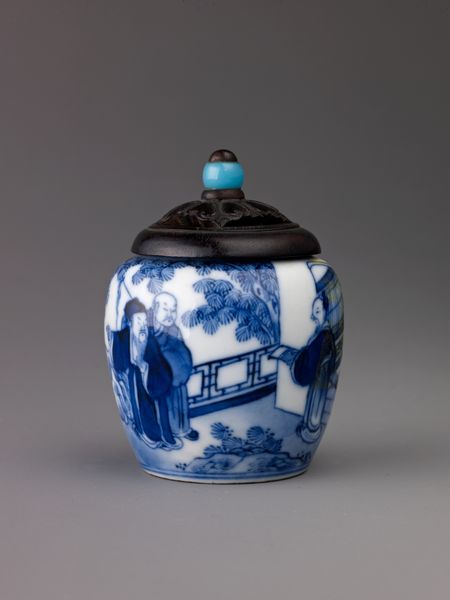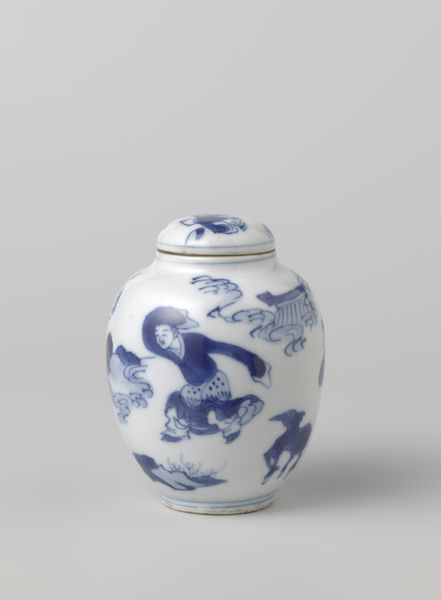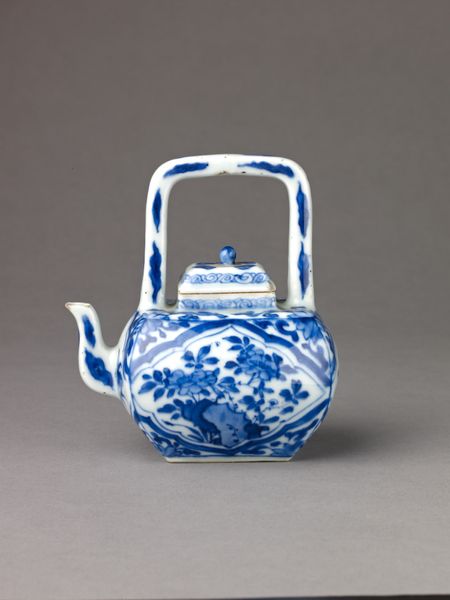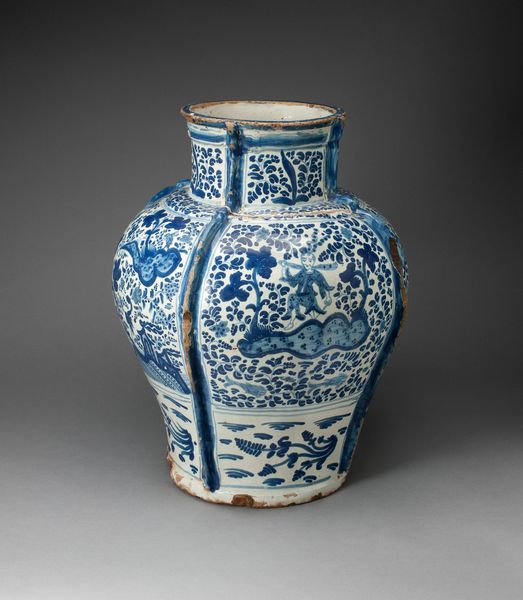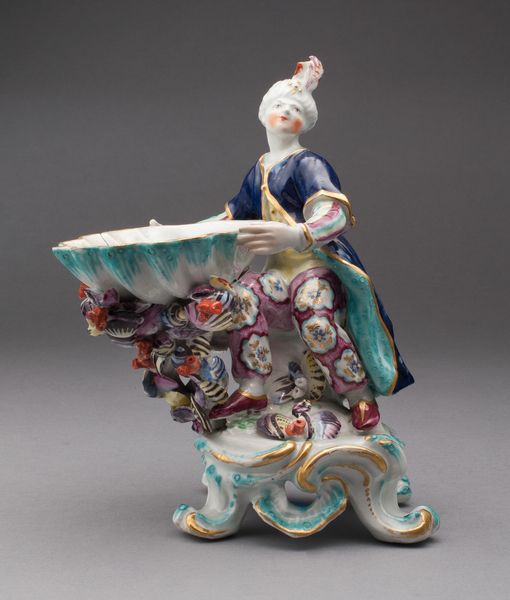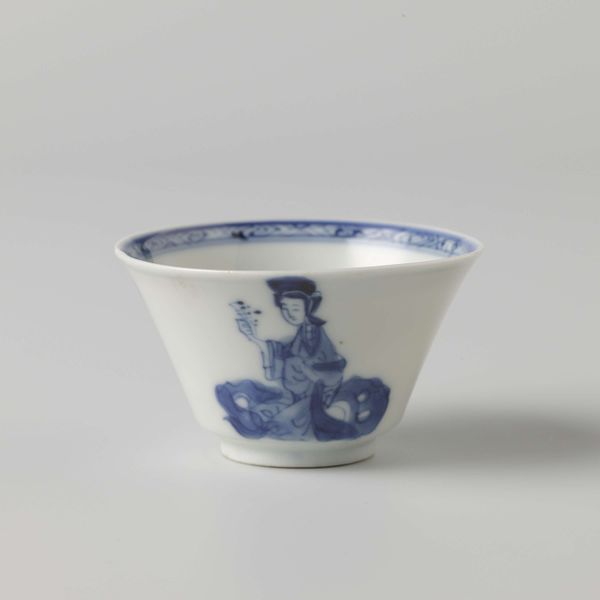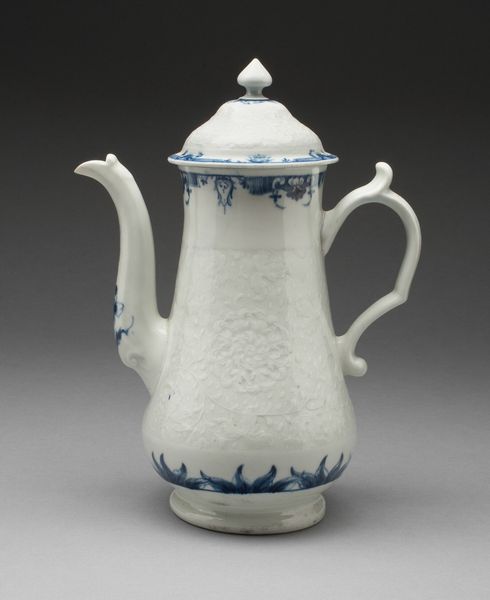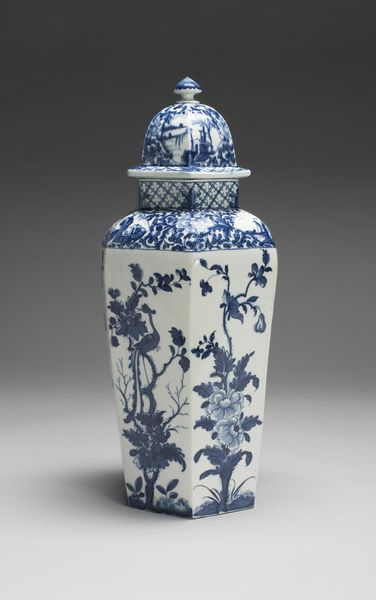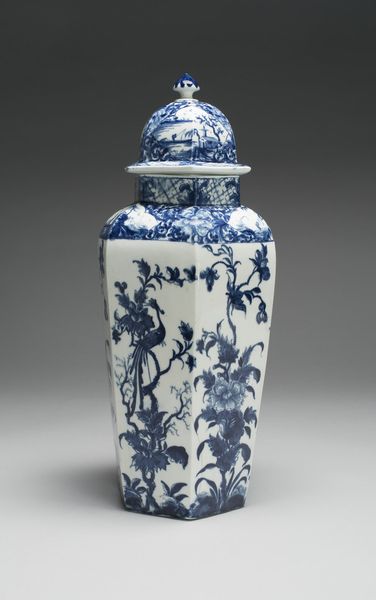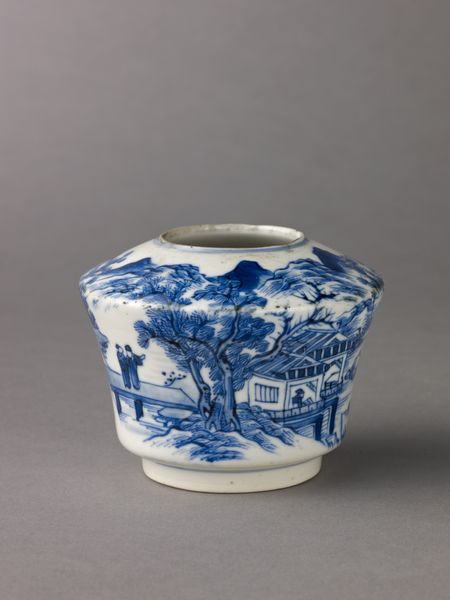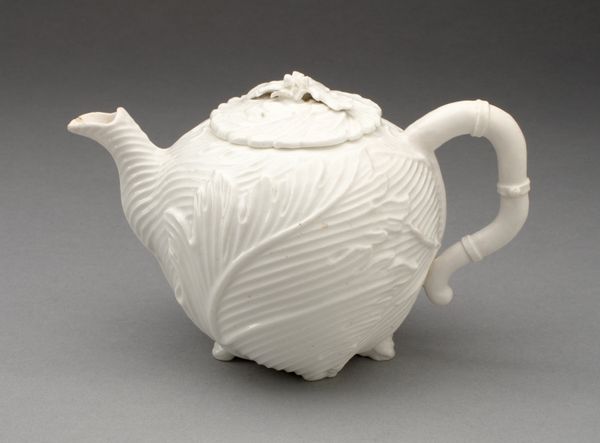
Figure of a Buddhist Monk (Budai Hoshang) c. 1690 - 1700
0:00
0:00
ceramic, sculpture
#
asian-art
#
ceramic
#
figuration
#
sculpture
#
decorative-art
Dimensions: 11 × 10.8 × 9.2 cm (4 3/8 × 4 1/2 × 3 5/9 in.)
Copyright: Public Domain
Editor: This ceramic sculpture, titled "Figure of a Buddhist Monk," also known as Budai Hoshang, was created around 1690 to 1700. The cobalt blue patterns against the stark white glaze give it such a striking appearance. I’m curious—what symbolic weight do you think an image like this would carry for viewers then, and now? Curator: Notice how his belly dominates the form. In Chinese iconography, a large belly, like Budai's, is often associated with abundance, good fortune, and contentment. He’s a symbol, essentially, of a life lived without earthly concerns. Now consider his posture. How does the way he is sitting contribute to his character? Editor: Well, he seems very relaxed, reclining a little, even. His smile seems warm, his eyes half-closed. I wonder if the pipe is to indicate his detachment to this world, as well as the bowl? Curator: Exactly. The pipe and bowl are key to understanding his character as unconventional and detached from societal expectations. This ties into a broader tradition in Zen Buddhism, which favored spontaneity, humor, and, indeed, subversion of norms as paths to enlightenment. How might someone encountering this image in the 17th century interpret these cues, as opposed to a contemporary viewer? Editor: Someone in the 17th century would have known instantly about Budai, maybe recognise him as an enlightened soul…while today it would need more unpacking, right? The humour could have different weight between them… Curator: Precisely. For contemporary viewers, some of those immediate cultural associations may have faded. We now interpret his image as a symbol of cultural exchange and hybridity due to its materiality as Chinese export porcelain. We must delve a little deeper to unpack its significance. Editor: That's fascinating – the layers of meaning and how they shift across time. Thanks! Curator: Indeed! Considering how symbols adapt to various contexts reveals our own assumptions, broadening our understanding of the world and of ourselves.
Comments
No comments
Be the first to comment and join the conversation on the ultimate creative platform.
